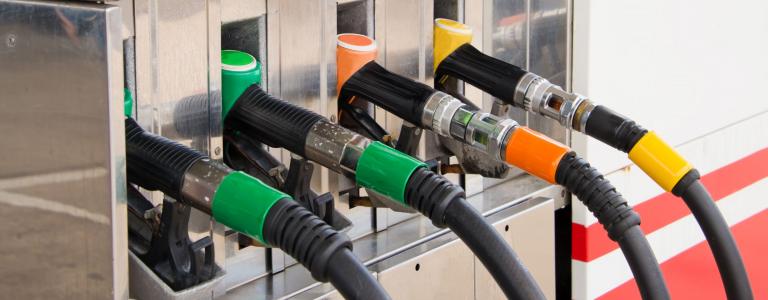Carbon Pricing: Busting four major myths
We break down four common myths about renewable energy and carbon pricing, proving that the latter is a smart mechanism to control pollution and promote the shift to a prosperous, low-carbon economy.
“Fossil fuels are so much cheaper than renewable energy!”
“Renewable energy destabilizes the electricity grid!”
“Carbon pricing is just a way for a government to place a tax on everything!”
This blog post breaks down four common myths about renewable energy and carbon pricing.
Facts are facts and, as you will learn, the truth is that renewable energy is cheap and effective and that carbon pricing is a smart way to control pollution and promote the shift to a strong, low-carbon economy.
MYTH #1: "Renewables cost more than fossil fuels."
You have likely heard this one before—some version of a statement that natural gas and coal are so cheap that renewables don’t make sense and will only cause us to pay more for our energy.
REALITY: This may have been true a decade ago, but not anymore. The cost of global renewables, (especially solar power) is plummeting (Figure 1) to the point where they now are on par with each other. Meanwhile, the cost of coal power is increasing around the world, as carbon pricing places a true cost on the pollution and health impacts from burning coal.

Furthermore, the fossil fuel sector’s dirty secret is that it is massively subsidized, which is part of the reason why fossil fuels are cheap. In Canada alone, over CAD 3 billion in subsidies support the production of oil and gas (Figure 2). Without these subsidies, the true cost of fossil fuels is actually much higher. What’s worse: these subsidies are paid with public money coming out of your pocket that could be better used to support clean energy, hospitals, schools, or just given back to you in lower taxes.
MYTH #2: "Renewables will destabilize the electricity grid."
This argument holds that if there are too many intermittent renewables on the grid, utilities will be unable to meet demand—for example, during peak times, if the wind doesn’t blow or the sun doesn’t shine.
REALITY: While it is true that renewable energy is intermittent, the more you build across a wider area, the better your odds are of getting strong average production. The sun is always shining somewhere, and the wind is always blowing somewhere. Besides, there are also battery technologies to store energy, as well as more predictable renewables such as hydropower, where water can be held back to support times of peak production, and biomass, where as long as you secure supply, you can always keep the lights on. Hydroelectric systems dominate energy storage capacity worldwide.
MYTH #3: "Carbon pricing doesn’t work."
This myth takes one of two forms: either 1) carbon pricing doesn’t reduce emissions at all, or; 2) it only reduces emissions if a carbon price is several hundred dollars per tonne.
REALITY: Quite simply, this is wrong.
Multiple academic studies show that carbon pricing does work, even at relatively low levels. Several of these studies have looked at the carbon tax in British Columbia, Canada, and shown marked improvement in per capita fuel consumption and reduction in greenhouse gasses since the carbon price came in. In addition, the performance of the province’s economy has outpaced the Canadian average since the carbon price was instated, further busting the myth of the "job-killing carbon tax."
Facts are facts and the truth is that renewable energy is cheap and effective, and that carbon pricing is a smart way to control pollution and promote the shift to a strong, low-carbon economy.
Besides, saying we shouldn’t implement a carbon tax just because it will only be a low rate and have a small initial impact is akin to saying "I have to train for a marathon, so there is no point in running a 5k." We have to start somewhere.
MYTH #4: "A carbon tax is just another tax on everything."
The misconception here is that a carbon tax will just make everything more expensive.
REALITY: The truth is that a carbon tax is a progressive tax, and an avoidable one at that. You can avoid or reduce paying a carbon price by driving less or buying a more fuel-efficient vehicle or keeping your thermostat at 19°C instead of 23°C.
In many jurisdictions, such as British Columbia and Alberta, residents have benefitted from associated tax rebates and reductions to the point that the average person actually pays less tax than they did before the carbon tax came into place, and, as mentioned above, they can now control how much they pay.
In British Columbia, the government lowered income tax rates to offset the impact of the carbon tax. You can avoid a carbon tax by buying less gasoline—you can’t avoid paying your income tax. Finally, a carbon price also focuses on raising prices on things that are bad (pollution) and can make things that are good (income, jobs, renewable energy) more affordable, depending on how the revenue is spent.
You might also be interested in
December 2024 | Carbon Minefields Oil and Gas Exploration Monitor
In November 2024, 23 oil and gas exploration licences were awarded across five countries, with Russia granting the licences that account for the largest portion of embodied emissions.
Increased Support Needed to Achieve India's Clean Energy Goals
India is on track to achieve many of its 2030 clean energy goals but needs to step up government support measures to accelerate the deployment of offshore wind, electric vehicles, and green hydrogen, according to a new report.
The Role of Multilateral Development Banks for Low-Carbon Procurement in the Infrastructure Sector
This report examines the critical role of multilateral development banks (MDBs) in advancing low-carbon procurement within the infrastructure sector.
Budgeting for Net Zero
This study estimates the cost gap for battery energy storage systems (BESSs), offshore wind, solar photovoltaic (PV), electric vehicles (EVs), and green hydrogen (GH2) to inform government support.
